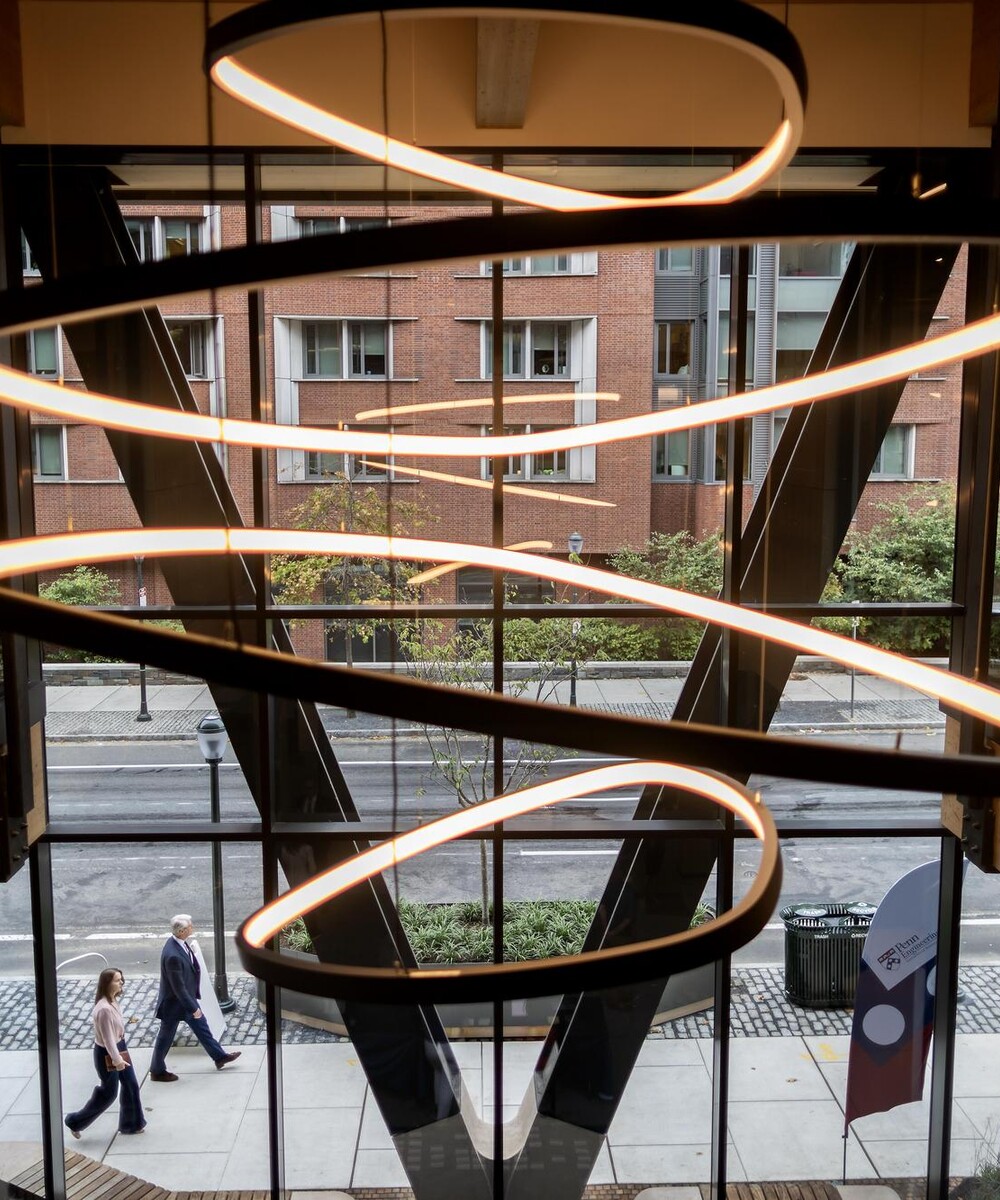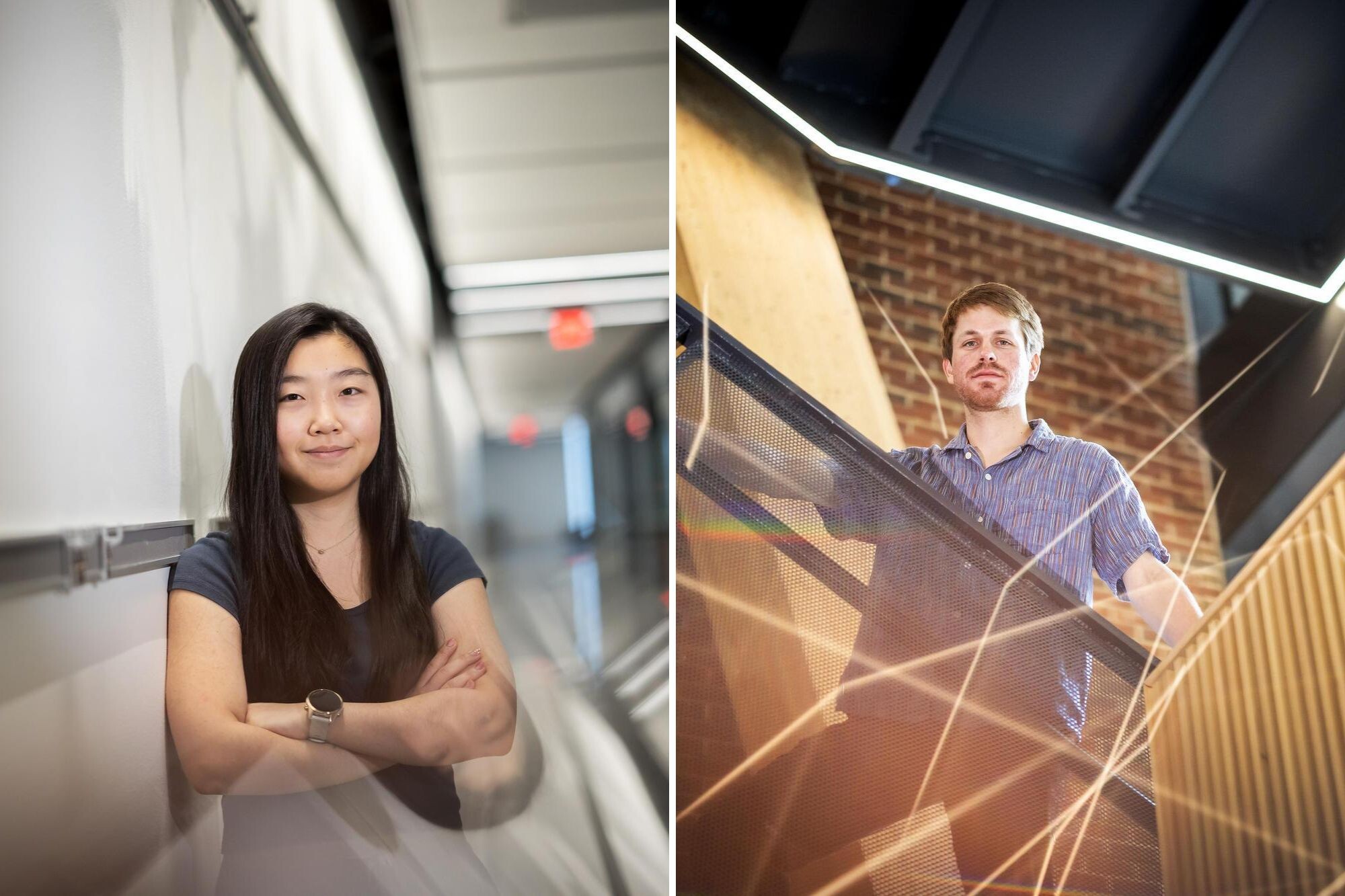
(From left) Doctoral student Hannah Yamagata, research assistant professor Kushol Gupta, and postdoctoral fellow Marshall Padilla holding 3D-printed models of nanoparticles.
(Image: Bella Ciervo)
5 min. read

Academic year 2024-25 was a milestone for artificial intelligence at Penn: It saw the introduction of the Penn AI Council, the launch of the Penn AI Initiative, the opening of Amy Gutmann Hall as a space for campus-wide data science and AI collaboration, the first AI Month at Penn, and a doubling of computing capacity for faculty through the Penn Advanced Research Computing Center.
And all the while, Penn’s students—across schools—delivered on the promise of AI through various projects. Penn Today captured these projects in a spring profile series.
Helen Jin, a doctoral student in the School of Engineering and Applied Science, and Davis Brown, also a doctoral student in Penn Engineering, worked with Eric Wong, an assistant professor in the Department of Computer and Information Science, to research large language models (LLM) for cyberbullying capabilities. The work profiles individual models for strengths and weaknesses, offering debug solutions. “If we can find a way to best quantify how these cyberbullying generations can happen and how we can mitigate them in the future,” Jin says, “I think that can really save people’s lives.”
In collaboration with Penn Integrates Knowledge Professor George Demiris and Professor of Medical Ethics and Health Policy Connie M. Ulrich, School of Nursing Ph.D. student Oonjee Oh, inspired by her work with patients as a nurse on a general surgery unit in South Korea, was the lead author on a paper published in the journal Nursing Ethics that applies moral principles to explore the ethical dimensions of artificial intelligence in palliative care. Ulrich says Oh’s paper “encourages us to consider both the benefits and challenges of using AI in supportive care for patients and families. These include the importance of autonomy and personal decision-making, the possibility of distress from using AI, biases in algorithms, and treatment predictions, among other concerns.”

Working with Professor of Learning, Teaching, and Literacies Ryan Baker in the Graduate School of Education, Rachel Liu, a first-year doctoral candidate in Penn GSE, helped to develop “JeepyTA” as an AI teaching assistant tool. The chatbot tool, currently being used by several instructors in GSE and elsewhere, supports students and instructors by not only answering questions about the syllabus but by offering formative feedback—feedback that “helps students think about things,” says Baker.
Derek Gibbs, an MBA student at the Wharton School and vice president of innovation of the Wharton AI & Analytics Club, created a prediction algorithm that uses AI to help MBA students forecast their class schedules. The tool uses historical data to estimate the likelihood of receiving specific courses based on students’ expressed utilities. Gibbs worked with Gérard Cachon, a professor of marketing and a professor of operations information and decisions, as an adviser to an independent study in which Gibbs explored the prediction algorithm concept. “My goal would be for no one to get a schedule that they don’t want,” Gibbs says.

College of Arts and Sciences rising third-year Jessica Mach, one of 10 students in the course Artificial Intelligence in Art: Redefining Creativity in the 21st Century, taught by Lisa Park in the Weitzman School of Design, created a video featuring an origami paper crane and other animals who come to life at night. Mach created the video using several AI tools she learned about through the course and later developed a game that incorporates players’ choices to determine the story, drawing inspiration from Vietnamese folklore. She’s since taken her skills in AI and applied them to t-shirt design as publicity chair for the Vietnamese Students’ Association.

A collaboration between the School of Social Policy and Practice (SP2), Penn Nursing, and Penn Engineering, Integrated Product Design master’s student Eileen Feng is working with Creative Resilient Youth, a youth-led mental health advocacy and creative arts initiative for teens in Philadelphia, to create a tool that provides youth a space to discuss their feelings, with the help of prompts, and empowers them to create art with the aid of personalized recommendations from the tool. “When it comes to creative arts, [AI] is generating a lot of artworks that come from someone else, but it’s not really facilitating the creative arts ‘process,’ so the process gap is there and it’s about creating a process where the AI can assist for the healing,” says Siva Mathiyazhagan, a research assistant professor in SP2 and PI of the project. “When the AI and then the human brain are processing this together, what kind of healing happens?”
Artificial intelligence touches disciplines across campus. To learn more about how members of the Penn community are pioneering the understanding and advancement of AI, visit the Penn AI website.

(From left) Doctoral student Hannah Yamagata, research assistant professor Kushol Gupta, and postdoctoral fellow Marshall Padilla holding 3D-printed models of nanoparticles.
(Image: Bella Ciervo)

Jin Liu, Penn’s newest economics faculty member, specializes in international trade.
nocred

nocred

nocred